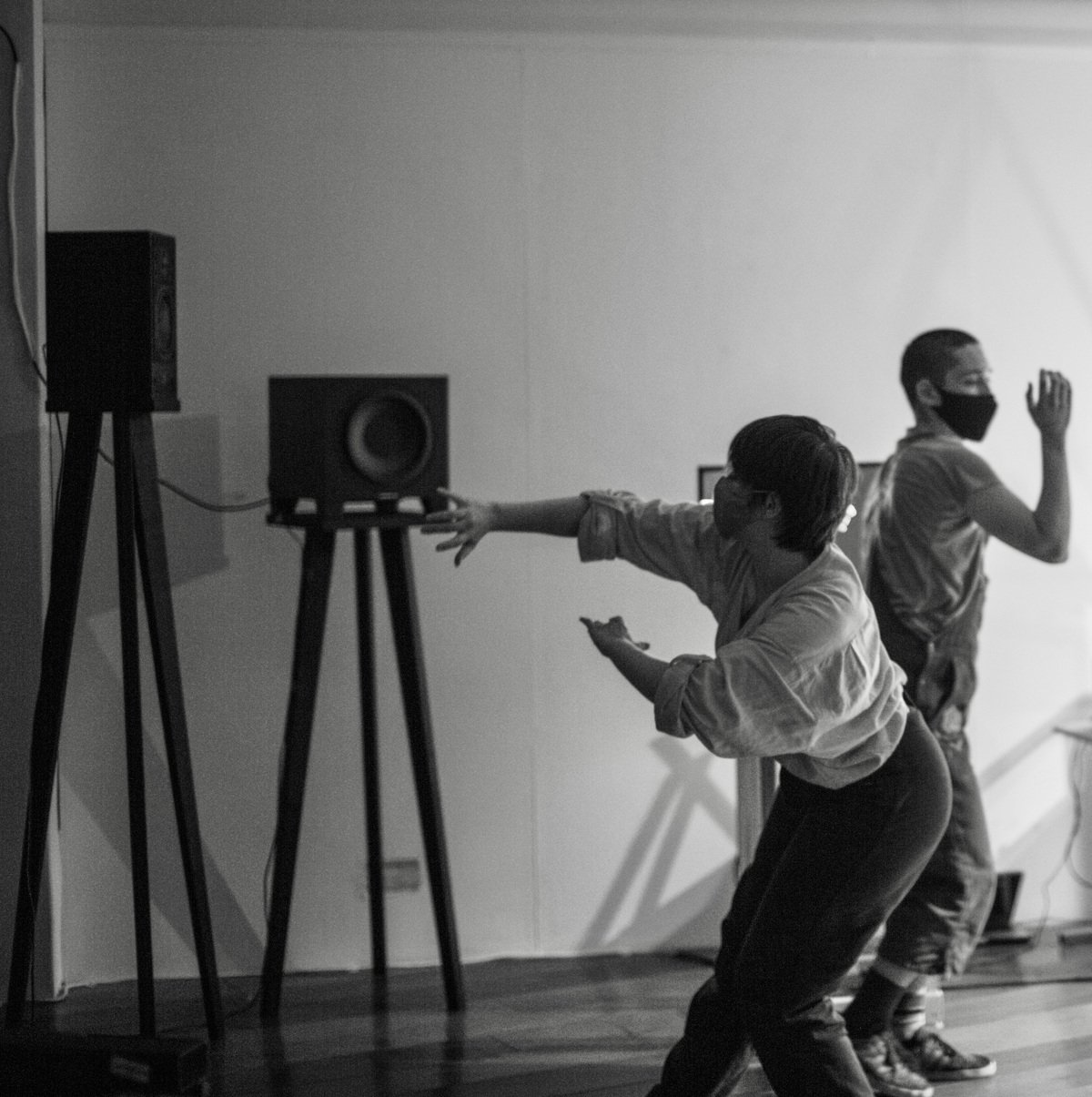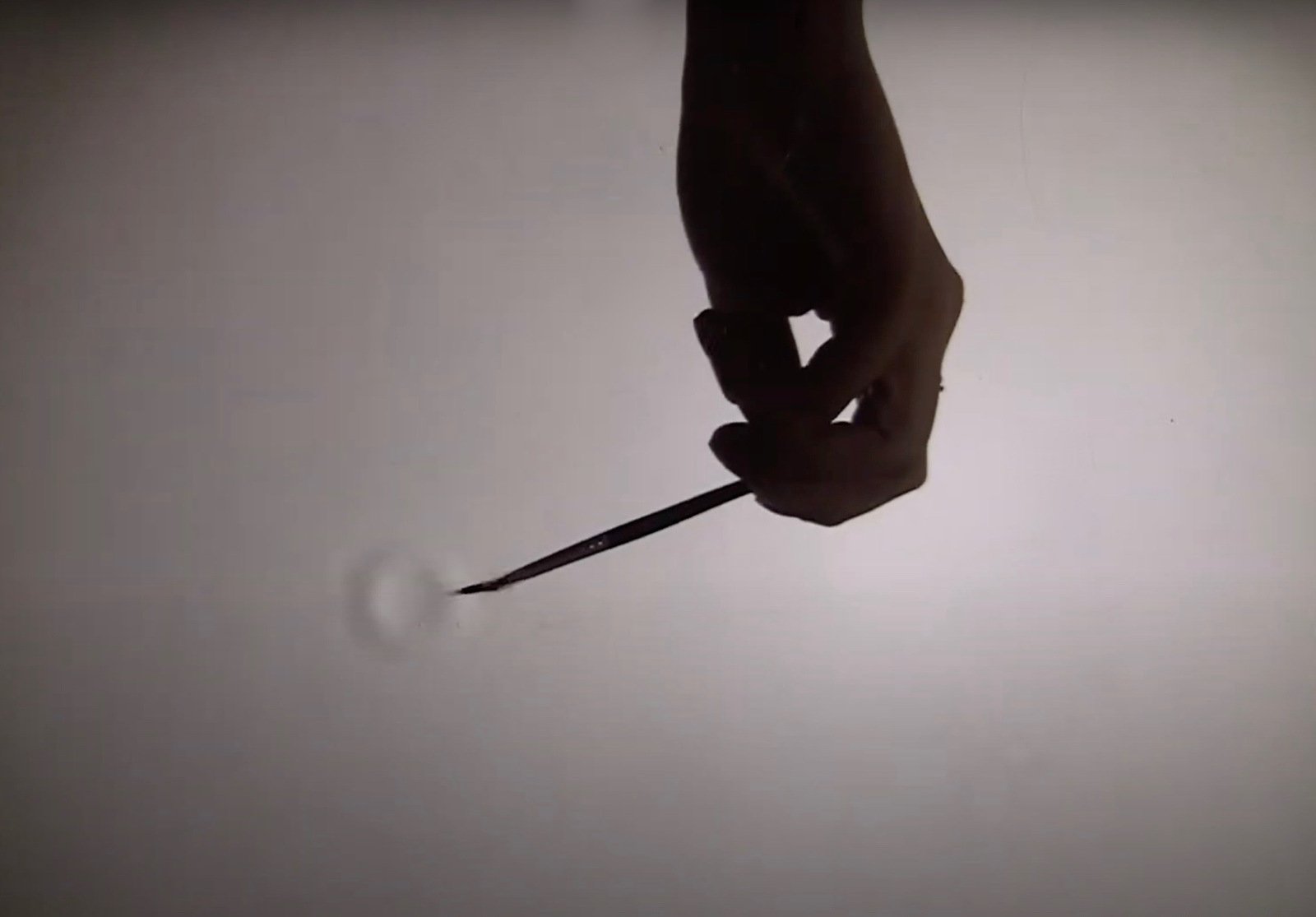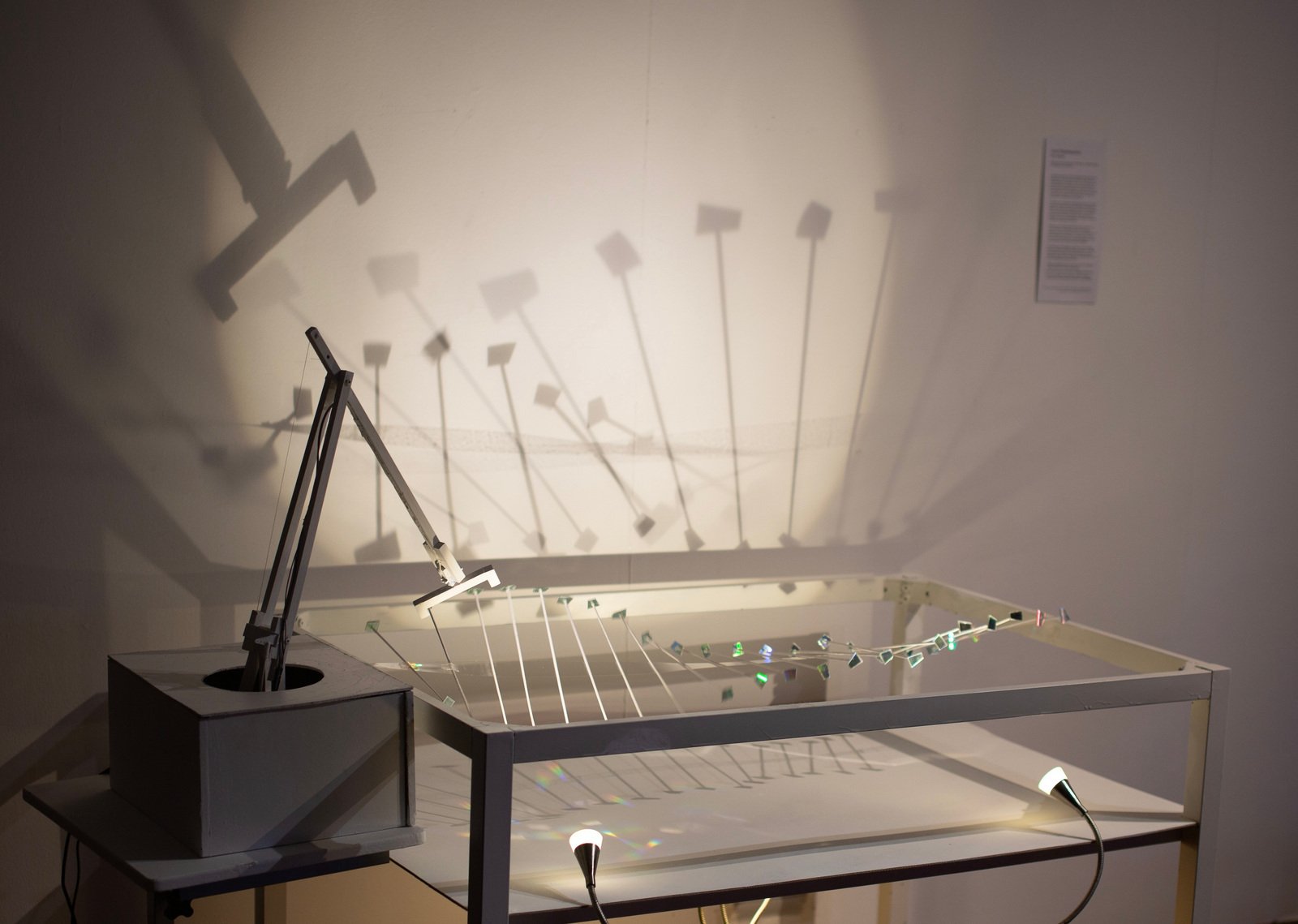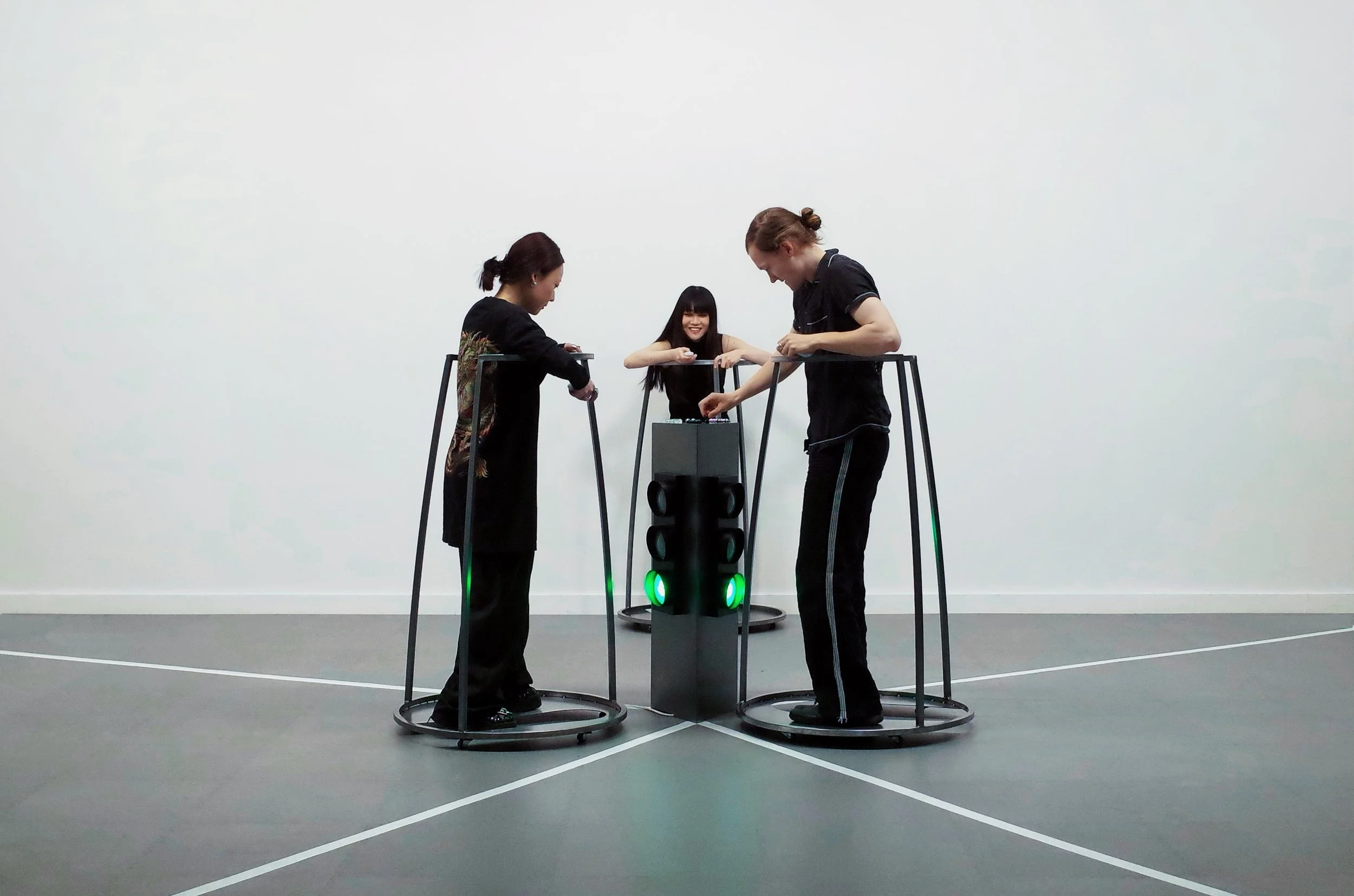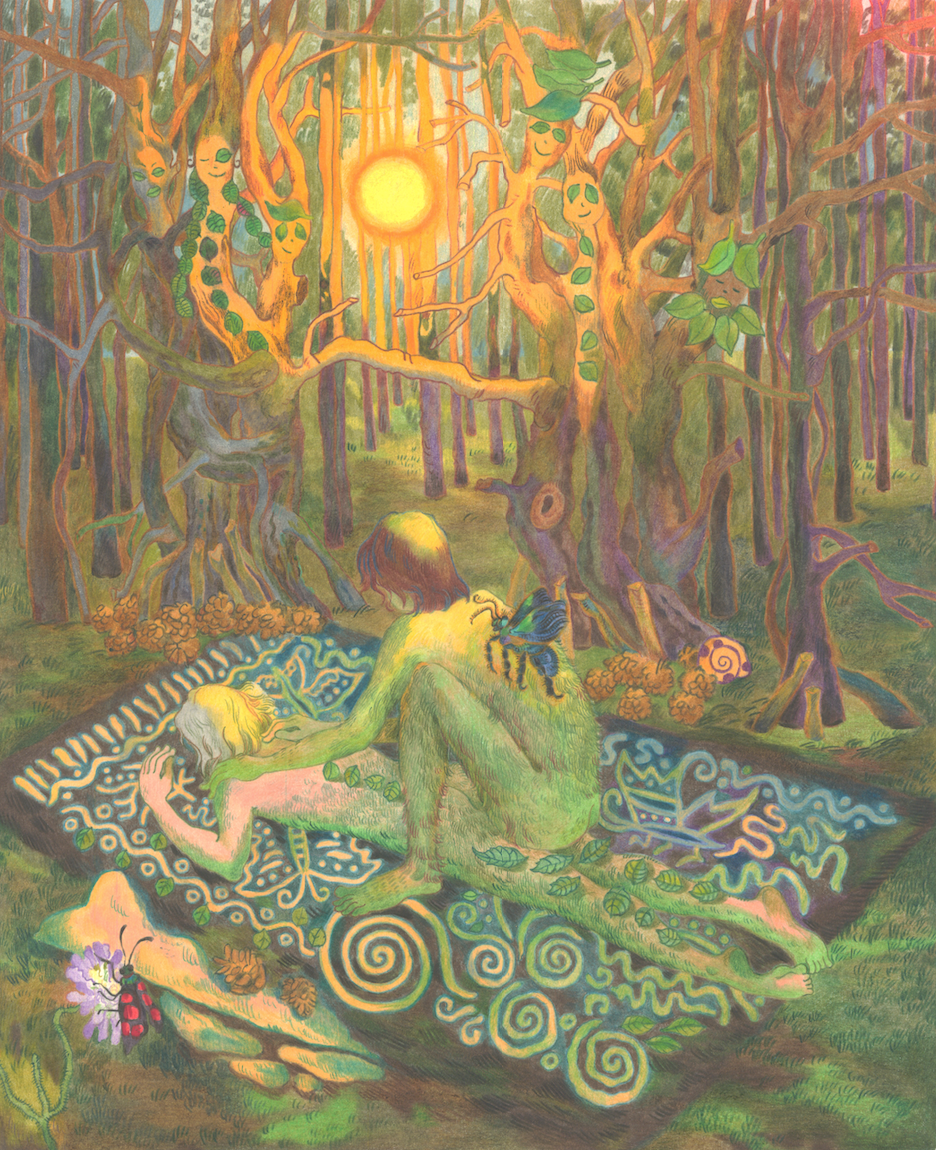10 Questions with Lucy Papadopoulos
Born in London, Lucy Papadopoulos lived and worked in Brighton, UK, and currently resides in Phnom Penh, Cambodia. After studying Fine Art with a placement in Theoretical Physics at Sussex University, she completed a Masters's Degree in Sound Design at the Royal College of Art, London. She has been curious to question theories of knowledge through philosophy and science since she was young, and as she grew up, this developed into a multi-disciplinary art practice.
Lucy was awarded Nagoya University Prize in 2018 for interactive sound sculpture "Mesoscopic Object" and nominated for Terra Carta Sustainable Initiatives Fund for sound installation "Ocean Drifters" in 2021. She has exhibited at Iklektic, Menier Gallery, and London Design Biennale, London, in 2021, and IRCAM, Paris, in 2020.
Lucy Papadopoulos - Portrait
ARTIST STATEMENT
Lucy Papadopoulos is a sound artist and researcher thinking through waveforms to investigate how meaning is created at the outer limits of what is knowable. She uses animist, new materialist, and quantum physics philosophy as a gateway for perception into the performativity or "alive-ness" of matter. This is in order to decentralise the notion of personhood as unique to humans and re-connect to our larger environmental body, using empathy as a form of dissecting our relationship with the non-human, whether animal, inanimate or microscopic. Her practice extends across film, electronics, interaction, sound, sculpture, creative coding, and performance.
Corporeality, Performance, Creative Coding and Sculpture, 100x100x300 cm, 2021 © Lucy Papadopoulos
INTERVIEW
First of all, tell us about your background and studies. What kind of education or training helped you develop your approach to art?
From a young age, I always stayed late in the art studio after school because it was a quiet place of introspection and creativity. Readings inspired me, and early paintings and drawings were always somehow related to ideas from books, particularly science fiction. I completed a placement in Theoretical Physics in 2018 at Sussex University, which multiplied my metaphysical streams of thought. I then completed a Master's in Information Experience Design at RCA, which diversified the range of mediums I was using beyond more traditional methods like painting, film, and sculpture into experience-based design.
You define yourself as a sound artist but also work with "film, electronics, interaction, sculpture, creative coding, and performance." As a versatile multidisciplinary artist, what is your preferred medium of choice, the one you will always come back to?
If I had to choose one, it would be sound, as it carries the invisible narratives that run through my work so well, both materially and conceptually. The ideas always start in the sonic realm, even though the result may be brought out further by visual elements. Sound, literally the vibration of matter and its movement through both human bodies, non-human bodies, and inanimate objects, transcends boundaries in a way that no other medium does. The act of deep listening calls attention to an awareness of things beyond our immediate perception, cultivating an acute sensitivity and curiosity about the underlying aliveness of matter. Sound helps us to be in the present moment where we are not thinking or talking so much, we are just feeling.
And what is your aim as an artist? What would you like the public to get away from your work?
Following on from my previous comment on sound, I would say one of my aims is to bring awareness to the invisible or underlying behaviour of matter. I try to create ways that people could intuitively embody their connection with the environment and how it feels through different experiences. I play with this idea of non-human personhood (the speculation of all matter as alive) as a gateway for us to imagine levels of consciousness beyond our own. I believe this to be a route to building a relationship with the environment and all its actants in the same way we would empathise with another person in order to achieve understanding and respect. I think a root cause of humanity's emotional disregulation is this disconnection with nature. I just saw earlier this week that doctors in the UK are now prescribing time in nature for certain mental or physical conditions. Funny that we have to go to the doctor to realise that!
Transmogrify, Custom Electronic Sculpture, 75x75x75cm, 2021 © Lucy Papadopoulos
Transmogrify, Custom Electronic Sculpture, 75x75x75cm, 2021 © Lucy Papadopoulos
Let's talk about your creative process. What aspect of your work do you pay particular attention to?
For me, it's always getting the balance right between the ideas being embodied in the piece itself versus the verbal or written descriptions of the work. I don't like when something is overly conceptualised or intellectualised because it limits the range of audience it meets. With the type of ideas I work with, this can be challenging because I'm tapping into some pretty intense philosophy, so that's why I try to keep it as playful as possible, both in the ideas and the experience itself.
Your work poses important questions, especially related to decentralization and the recognition of non-human beings. How did you develop an interest in this field? And what sources influenced you in your research?
At the centre of my inspiration are ancient indigenous forms of knowledge, what is known as 'animism', although that term is a western anthropological construct. The irony is that before the rise of human civilisation, there wasn't a need for a word to define this knowledge because it was embodied rather than intellectualised, which is part of the anthropocentric problem. Animism was the felt lived experience of persons who exist all around us in nature and our fundamental connection to and respect for them. Those persons included the air, the trees, the water, the stones, as well as the plants and animals. Nowadays, this realm of discourse is only legitimised through academic philosophy like new materialism, which I'm also inspired by, but I believe in many ways disconnects from these ancient ideas. I'm also inspired by quantum physics, in particular the measurement problem, where human separation from nature is radically challenged. As Niels Bohr famously said, 'we are a part of that nature we seek to understand. Meditation has also greatly influenced me, including other practices that induce altered states of consciousness, such as breathwork and the occasional use of psychedelics known to 'dissolve the ego', that is, the self, and therefore step away from our anthropocentric ways of thinking.
Traces of Intangible Events, Film, 2018 © Lucy Papadopoulos
How important do you think art is in addressing such themes? And how do you manage to make complex theories explicable and understandable through your work?
I think certain types of 'art' experiences allow participants to tap into less linear modes of perception, for example, their intuition and 'felt' experience which can say a lot of things more than words. This is important for expressing ideas related to animism, for example, which requires a bodily awareness of something beyond our immediate reality. Of course, the same goes for the quantum realm. For me striking a balance between articulating complex ideas whilst keeping the experience inclusive and engaging has always been tough. But the nature of my research itself goes into quite expansive and metaphysical realms, so I have to accept the ideas won't always be fully understood, or maybe it's an acquired taste. Anyway, that's why peculiar and playful modes of speculating are key. When your work is built on the conceptual foundation of accessing the inaccessible or limits of perception and knowledge itself, it's bound to get lost in abstraction, but this is an important part of the philosophical process. The main point is that we are generally pushing boundaries in the barriers of thought itself and the types of dynamic and multi-sensory understandings we can have. For example, Ocean Drifters is a speculation about the experience of human-made noise on plankton. Although it is true that we could never access a plankton's perspective and understand their experience fully, we can at least hold the capacity to imagine what it might be like, and it is that imagining that I aim to set up.
Do you think art can help people discover new theories and approach different themes? And in doing so, what do you think is the artist's role?
I think art can lay fertile ground for people to discover things for themselves through intuition and experiential learning, and for me, a good artist releases control over the consequences of that. It can at least guide people in the right direction, especially with the kind of experiences I'm trying to achieve, which requires active, corporeal, and immersive participation - where feeling is more important than knowing. I always think that the process of art is a bit like a DJ who acts as a library of experiences with each song they play, and the ideas are like the songs which come from many sources mixed into something new. The artist, like the DJ, is the mediator between thought/knowledge and experience, concept, and form. And the multiplicity of interpretations on the dance floor is out of their control.
Let's talk about the future. What are you working on now, and what are your plans for the future? Anything exciting you can tell us about?
I'm currently living in Cambodia, where I am working and further researching animism in Virachey National Park, learning directly from the indigenous community. My friend and guide Yok is part of the Tampuan tribe, whose culture and beliefs are slowly dying out as they are forced to modernise more and more as a result of economic pressures. Amongst applying for residencies and artist's calls, I hope to also move into the domain of sound therapy in the future as my work slowly goes in that direction. Sound therapy ties together the three pillars of my research perfectly; physics, sound, and ritual.
Wave Measurer, Kinetic Sculpture, 200x200x300 cm, 2021 © Lucy Papadopoulos
What do you hope to accomplish this year, both in career goals and personal life?
This year I am working on establishing financial stability through various creative jobs. I aim to somehow juggle being able to travel whilst still researching and making. I have been in England for too long! I hope by the end of the year, I will be economically able to rebuild a permanent studio too and have (somehow!) disposable income to extend my practice. I have been learning to be patient with the process of uncertainty more, what with recent pressures socially and after-effects of lockdown, and the overwhelming financial pressure this created.
Finally, any shows, galleries, or publications where our readers can find your work?
You can see the soundscape for the installation Ocean Drifters on the London Design Biennale website, accepted for Design for Social Change in 2021. I'm currently working on a manifesto which will be on my website later this year. Readers can check out my website for upcoming updates on a breathwork-sound project which will be used in online and in-person workshops very soon.



